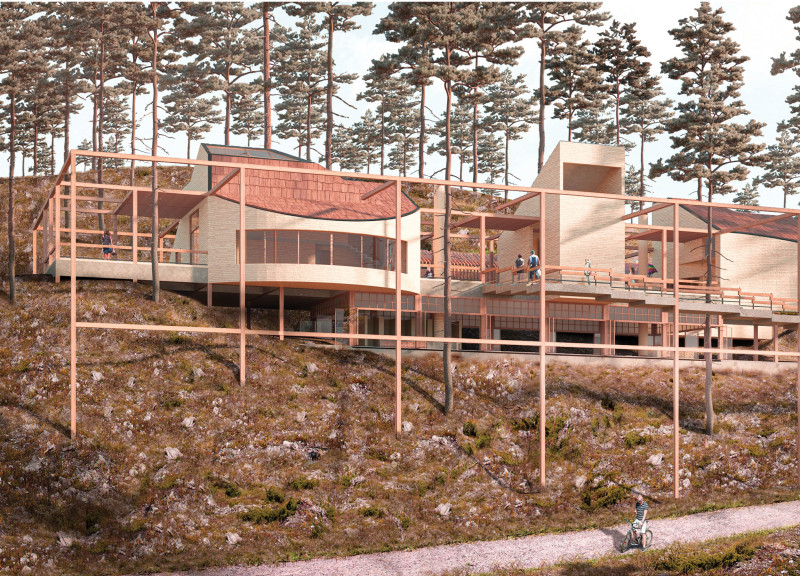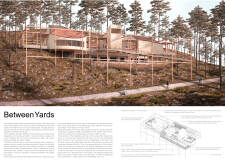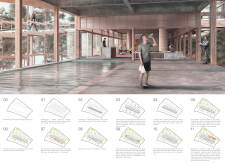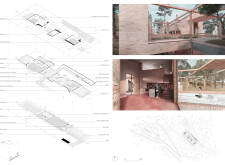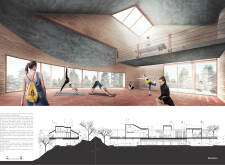5 key facts about this project
The architectural design project under review encompasses a contemporary structure that seamlessly integrates with its surroundings. The project functions primarily as a [insert function, e.g., community center, residential complex, office building], embodying principles of sustainable design, community engagement, and functional aesthetics. The layout maximizes spatial efficiency while considering environmental impacts, ensuring a balance between utility and design.
This project is characterized by its use of strategically chosen materials, including reinforced concrete, glass facades, and sustainably sourced timber. The combination promotes not only structural integrity but also energy efficiency. The concrete offers durability and thermal mass, while the glass elements optimize natural light entry, fostering an inviting atmosphere within the space. Timber elements introduce warmth and contribute to the overall sustainability of the design.
The architectural design emphasizes open floor plans and fluidity between spaces, enabling a versatile environment adaptable to various functions. Key features include large, operable windows that enhance ventilation and connectivity to the outdoor environment, promoting a sense of inclusion and interaction with nature. The strategic placement of green spaces and landscaping around the building complements the architectural structure, creating a harmonious relationship between built and natural environments.
Unique aspects of this project stem from its innovative approach to community interaction. Unlike typical buildings that may prioritize aesthetics over social function, this design emphasizes a user-oriented experience. Spaces are designed to encourage collaboration, communication, and community events, reflecting the values of inclusivity and accessibility. Furthermore, features such as community gardens or shared recreational areas foster engagement among users, promoting a healthy, vibrant community.
The integration of technology within the architectural design serves to enhance both functionality and sustainability. Smart building systems monitor energy usage and climate control, optimizing comfort while reducing environmental footprints. These advancements are accompanied by user-friendly interfaces that allow occupants to engage directly with building systems, promoting awareness and responsibility towards energy consumption.
In summary, the architectural design project presented exemplifies a thoughtful approach to contemporary architecture, balancing form, function, and sustainability. The careful selection of materials, innovative space planning, and a strong community focus sets this project apart from conventional designs. For further insights, readers are encouraged to explore the architectural plans, architectural sections, and architectural designs associated with this project to gain a deeper understanding of its principles and execution.


